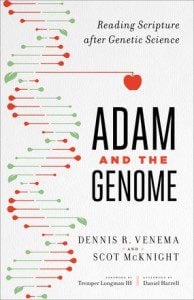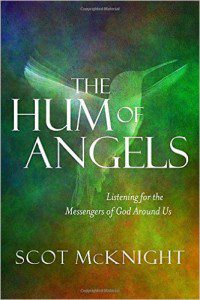Sandy’s fury
Becky Hsu distinguishes satisfaction and happiness. “Can we say, then, that life satisfaction is more like taking an exam (where 100% is the highest you could get), whereas happiness should be scored more like an essay (upon which there are no constraints in how excellent, thoughtful, or thought-provoking it could be)? Or, maybe we can say that asking whether you’re satisfied with life is like asking whether you finished your scoop of ice cream, whereas asking about happiness is more like asking how your scoop of ice cream tasted. There are no bounds on how delicious ice cream could be.”
The Jesus-was-married fragment: “The real interest of this fragment, assuming its authenticity, is to underscore the immense and ongoing diversity of opinions within the early church during the 2nd and 3rd centuries. This sophisticated analysis, which scholars of early Christianity have been building for over a century (and which is arguably more offensive to conservative Christian sensibilities than Jesus’ marriage), is simply not part of the general public’s imagination. The impression, bolstered by many in the often equally conservative Biblical Studies community, that early Christian history is only about Jesus continues to shape the public’s perception of new textual and archaeological discoveries. Clearly, the scholarly community has failed to communicate the fruits of its dynamic interdisciplinary research to the general public. At the same time, however, it has increasingly become the norm for prominent scholars to submit new discoveries to the court of public opinion before a thorough international scholarly analysis is allowed to take place. Book deals and television rights now take precedence over peer-review and patient research.”
Nick Perrin, Mike Bird and The Gospel of Thomas. Mike Bird’s red-headed friend.
Fr Bob Barron takes on Steinberg: “It was with barely concealed delight that “Chicago Sun-Times” columnist Neil Steinberg conveyed the findings of the recent Pew Forum survey that the “nones,” those who claim no particular religious affiliation, are sharply on the rise in America. Moreover, he crowed, the survey revealed that a disproportionate number of young people placed themselves firmly in the “none” camp, thus indicating that religion’s decline would only accelerate in the years to come. Taking these findings as a starting point, Steinberg then delivered himself of an anti-religion screed that was, even for him, remarkable in its vitriol and lack of nuance.”
Esther Junia’s journey into the Women in ministry discussion: Part one, Part two.
If only all reviews were this sane and intelligent: Fred Sanders reviews the new book that collects essays by evangelicals on the Trinity and complementation [hierarchicalism]/egalitarian [mutualism] debate. “The evangelical debate about gender roles may seem like an unlikely venue for hashing out trinitarian theology, but that is what has been going on in the last few years. Everybody knows that evangelical complementarians and evangelical egalitarians have competing views of the relationship between men and women in the family, the church, and society. But now there is a substantial literature that connects these two views to the doctrine of the Trinity. Some complementarians argue that just as the Father has headship over the Son in the eternal Trinity, so husbands have headship over wives in human society. Some egalitarians counter that this is heresy, and that the immanent Trinity is really a community of equality that our societies should emulate. That exchange seems straightforward enough, but it has generated a very complex literature.” Here is a good zinger: “Socialists peer into the Trinity and discern socialism; capitalists capitalism; Catholics see hierarchy; the Orthodox see intercommunion among equals; Baptists see Baptists; egalitarians see only equality, and complementarians see complentarianism. When we use the image-of-the-Trinity strategy, we tend to find what we want to find. Furthermore, there is a notably arbitrary character to which of our convictions and values we decide to locate in the Trinity.” [Yes, trinitarian relations need to be examined; Yes, we need to be cautious about what we see and find.]
Good sketch by Mark Roberts of the pros and cons of digital technology for education. And another good sketch of gospel and salvation by Derek Vreeland. Thanks Derek for that nice graph.
 Gerald Green, of the Pacers, has some serious hops.
Gerald Green, of the Pacers, has some serious hops.
Roger Olson on Jenkins’ new book on the genocidal texts: “I am not going to declare unequivocally about the historicity of those texts; I will bracket them out and say “I just don’t know what to make of them” and “I cannot picture Jesus, who is the God I worship and adore, commanding those things.” And “I look forward to finding out from God himself, from Jesus himself, what I am supposed to think about those texts.” For now, all I can say is, they do not speak God’s voice to me. I do not understand them. They are dark and obscure and frightening. I run to Jesus. That was Luther’s approach, too, but he held onto a “hidden God” behind Jesus who commanded the slaughter of the innocents and who uses the devil to carry out his commands (“The devil is God’s devil!”). I do not believe in a “hidden God” behind Jesus. With Barth I affirm that Jesus is God for us and all we need when contemplating the character of God.”
Anorexia survivor — Emma Scrivener.
Phillip Jenkins, on the Urban History conference: “I don’t imagine that a group of atheistic professors gathered in a smoke-filled room to devise strategies from preventing their younger colleagues discovering the truth about religion in American urban history. Certainly, many academics do have a secular and left-liberal bias, but that does not lead them to deliberate policies of censorship. Usually, I imagine, they know perfectly well about religion’s role, they just choose not to study it. Adding to the irony of the event, the conference coincided with a large-scale youth-oriented demonstration and prayer walk focused on the theme, “God Belongs In My City.” You saw the T-shirts all over the city. In the academic study of urban history, though, God has at best a toehold.”
Meanderings in the News
Earnings for dead celebrities: “Liz has beat out the King of Pop, one of her most loyal friends, for the honor of highest paid dead celebrity, according to Forbes’s annual list of “Top-Earning Dead Celebrities.” Taylor, who died at 79 in 2011, grossed $210 million last year, thanks to the $184 million that her estate made from Christie’s auctions of the star’s belongings, Forbes reports. Her best-selling perfume White Diamonds made $75 million last year, and the rest of the loot comes from her property sales and movies like Cleopatra andAround The World in 80 Days.”
Yowzers, the ten most expensive universities, beginning with Sarah Lawrence.
Learning a second language: “Siebert started studying the science of memory and second-language acquisition and found two concepts that went hand in hand to make learning easier: selective learning and spaced repetition. With selective learning, you spend more time on the things you don’t know, rather than on the things you already do. Siebert designed his software to use spaced repetition. If you getcup right, the program will make the interval between seeing the word cup longer and longer, but it will cycle cup back in just when you’re about to forget it. If you’ve forgotten cup entirely, the cycle starts again. This system moves the words from your brain’s short-term memory into long-term memory and maximizes the number of words you can learn effectively in a period. You don’t have to cram. In fact, if you do cram, you might learn a set of words and do well on a test, but you’ll forget it all a few weeks later.“
 What’s wrong with this evolution chart?
What’s wrong with this evolution chart?
Speaking of evolution… what makes us human? Cooking!: “According to a new study, a surge in human brain size that occurred roughly 1.8 million years ago can be directly linked to the innovation of cooking. Homo erectus, considered the first modern human species, learned to cook and doubled its brain size over the course of 600,000 years. Similar size primates—gorillas, chimpanzees, and other great apes, all of which subsisted on a diet of raw foods—did not. “Much more than harnessing fire, what truly allowed us to become human was using fire for cooking,” said study co-author Suzana Herculano-Houzel, a neuroscientist at the Institute of Biomedical Sciences at the Federal University of Rio de Janeiro in Brazil.”
Are we getting smarter? Yes: “IN THE MID-’80s, the political philosopher James Flynn noticed a remarkable but puzzling trend: for the past century, average IQ scores in every industrialized nation have been steadily rising. And not just a little: nearly three points every decade. Every several years, IQ tests test have to be “re-normed” so that the average remains 100. This means that a person who scored 100 a century ago would score 70 today; a person who tested as average a century ago would today be declared mentally retarded. This bizarre finding—christened the “Flynn effect” by Richard Herrnstein and Charles Murray inThe Bell Curve—has since snowballed so much supporting evidence that in 2007 Malcolm Gladwell declared in The New Yorker that “the Flynn effect has moved from theory to fact.” But researchers still cannot agree on why scores are going up. Are we are simply getting better at taking tests? Are the tests themselves a poor measure of intelligence? Or do rising IQ scores really mean we are getting smarter?”
Are young Americans reading more and using libraries?
Potential source of problems in Jerusalem: “JERUSALEM — A simple, ancient ritual is threatening the delicate security balance atop Jerusalem’s most sacred plaza: Jews are praying. On most days, dozens — sometimes hundreds — of Jewish worshipers ascend to the disputed 36-acre platform that Muslims venerate as Al Aqsa mosque and Jews revere as the Temple Mount with an Israeli police escort to protect them and a Muslim security guard to monitor their movements. Then, they recite a quick prayer, sometimes quietly to themselves, other times out loud. Jewish activists call the prayers harmless acts of faith. Police and Muslim officials see them as dangerous provocations, especially given the deep religious sensitivities of the site and its history of violence. Twelve years ago, the presence of Jews on the plaza was so controversial that a brief tour by Israeli politician Ariel Sharon helped trigger a Palestinian uprising that lasted more than four years.”
Erik Eckholm sketches response by ex-gay men about conversion therapies.
Meanderings in Sports
Al Carius: “When Al Carius was winning Big Ten titles in cross-country and track as a University of Illinois runner nearly 50 years ago, he wore pants with a size 32 waist and promised himself never to need a larger size. The label on the jeans Carius was wearing this week said “W 32.” That not only proves Carius, who turned 70 in July, is a man who keeps his promises.”
Where’s Nadia Comaneci today? “We remember her as a shy, ponytailed, 14-year-old pixie who scored the first perfect 10 in Olympic gymnastics history 34 years ago. But these days Nadia Comaneci is a multitasking mom who juggles charity work, speaking appearances and product endorsements, Twittering as she goes. Comaneci, who spoke on the phone with the AARP Bulletin while working out on a treadmill in her Norman, Okla., home as her 4-year-old son napped, is married to gymnast Bart Conner, also a former Olympic gold medalist. Together, they run the Bart Conner Gymnastics Academy, International Gymnast magazine, a television production company and a gymnastics supply company.”












